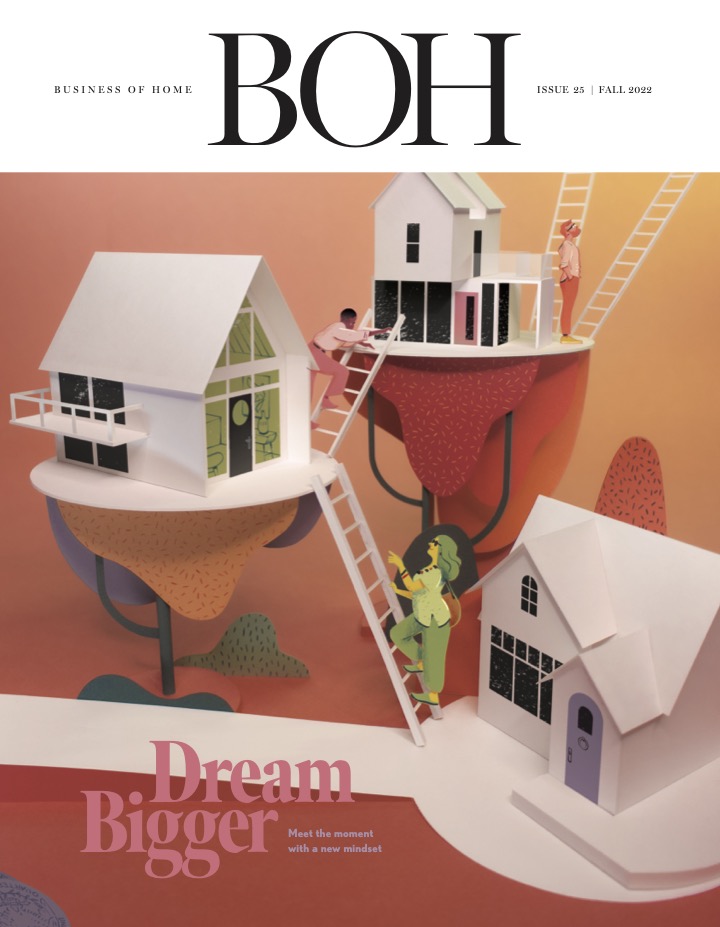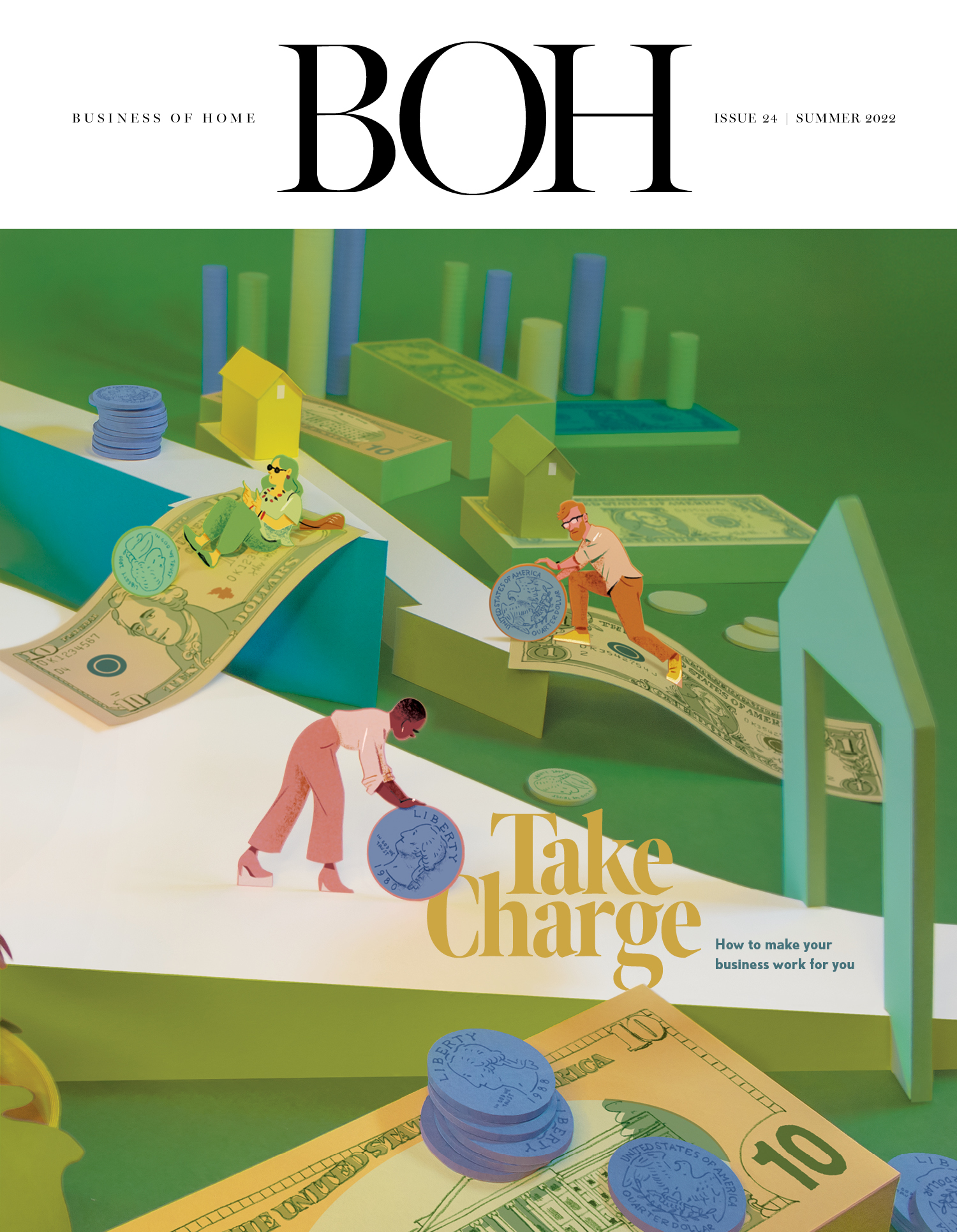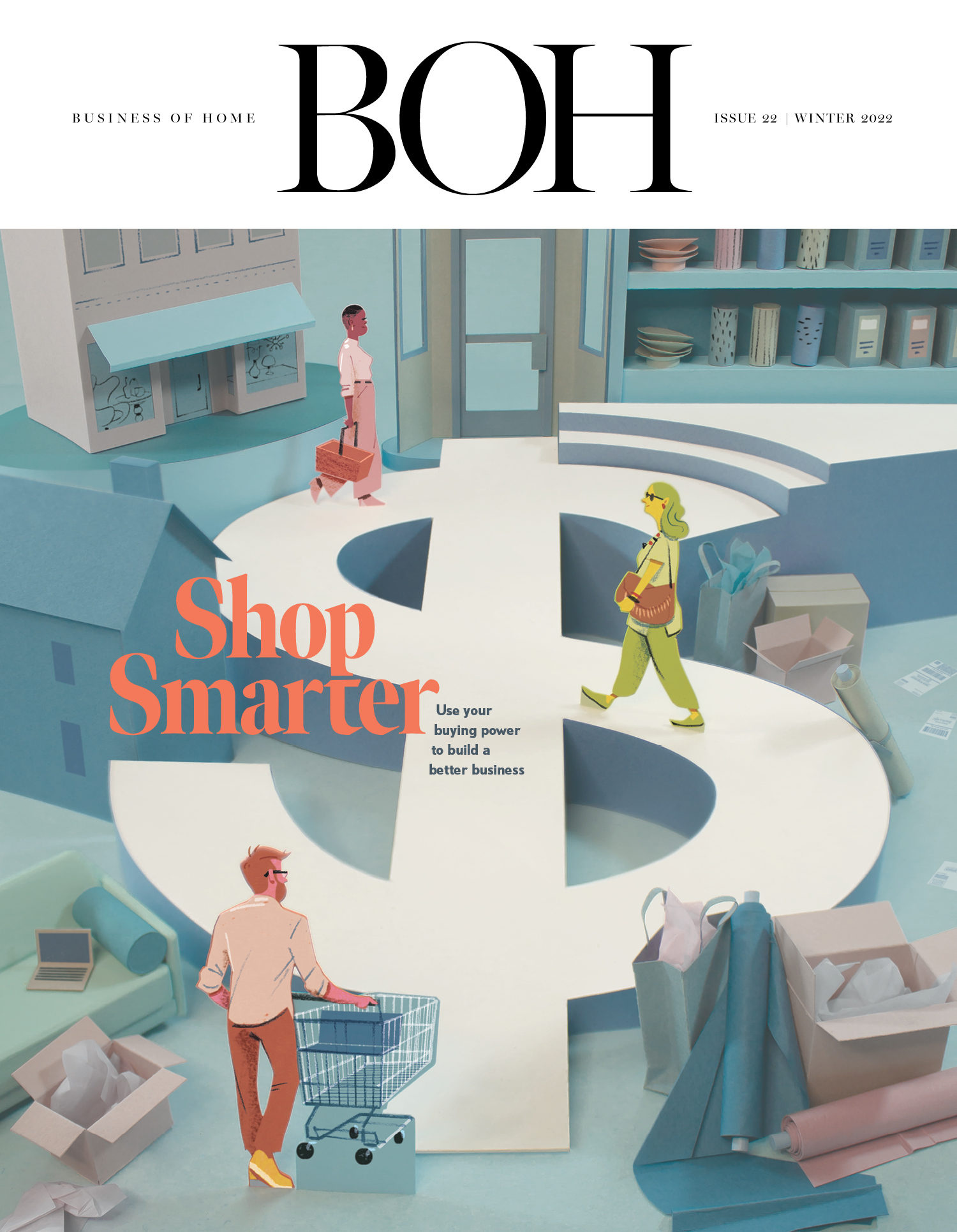The 50 States Project is a series of candid conversations with interior designers across the country about how they’ve built their businesses. This week, Fairmont, West Virginia–based designer Kaleigh Cody of River Birch Design tells us how a strong relationship with an early design mentor positioned her for long-term networking and business success, how she found freedom in quitting hourly billing, and how humility in her business relationships has become a calling card that helps her make connections.
How did you make your way into the design business?
It was pretty much always going to be design or something in the equestrian industry. I had grown up riding horses my entire life, and I was an assistant to a couple of different trainers. In high school, I had the opportunity to take a couple of design courses, where we learned the basics like space planning and color schemes, and I really enjoyed it, so I ended up going to school for it. After I graduated, I just went full steam ahead with design and never looked back.
How did design school hone your skills?
There were a handful of design schools in the Cleveland area [where I grew up] at the time. Mine was a two-year program, but the professor there was a designer herself, and she did a great job exposing us to her contacts. We would take field trips two to three times a week, out in the field going to upholsterers or tile showrooms, or walking through the yards at countertop showrooms, and she would have people come in and talk about their experiences. I know that not all the other schools have that—they were more in the classroom—so I was really grateful for those experiences. I’ve always really enjoyed the cabinetry side of things: kitchens and bathrooms. We did some kitchen projects and those were my favorite classes, doing the layouts and collecting the materials.
Sounds incredible—I think you’ve had the most practical, useful design education of anyone I’ve ever talked to.
It’s interesting, because it was only a two-year program, so everyone’s always like, “Wow, you only had two years.” But you don’t need any more than that. When I graduated, my professor was very much like, “Get involved in the organizations and go to the meetings and be involved.” So I did and I was able to get an internship out of that, and I’m still involved in ASID today—I was the president of the Ohio North chapter at one point. Her saying all of that and exposing us to so much definitely kick-started my career and opened up a ton of possibilities.
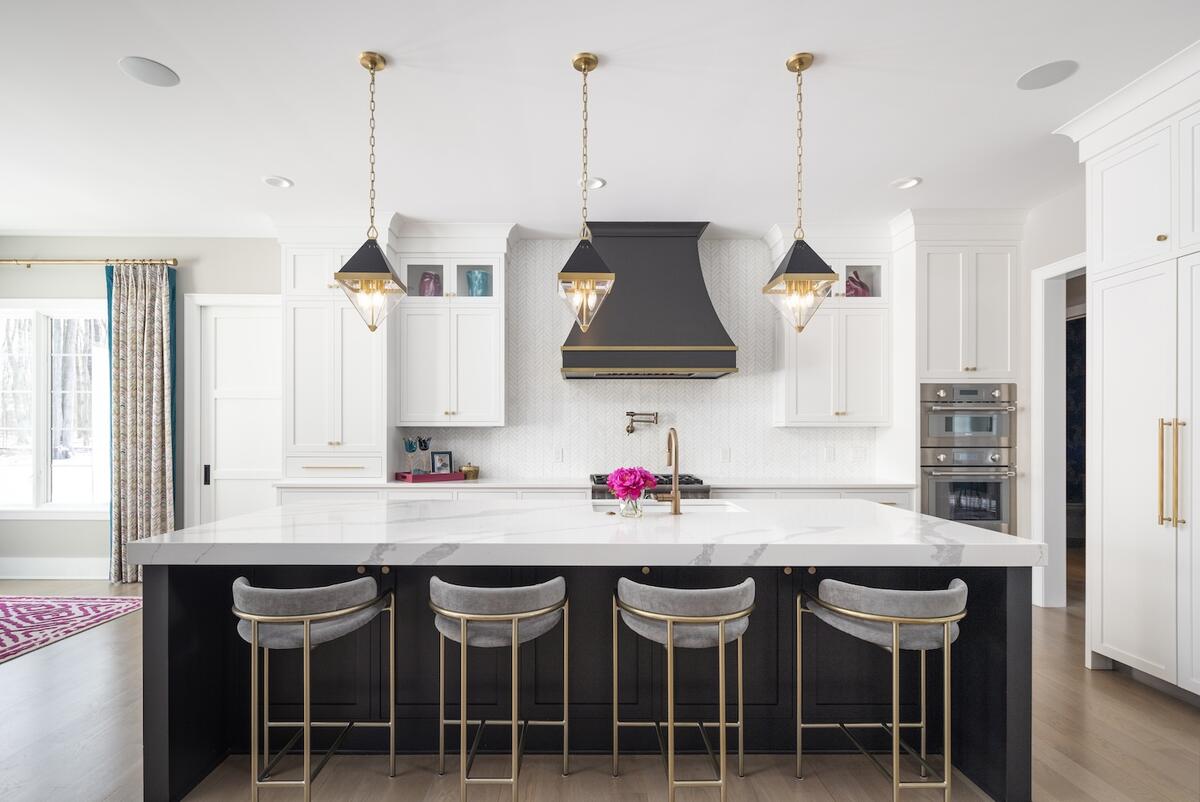
Where did you work after graduation?
When I was involved in horseback riding, I would attend a huge horse show every winter in Florida. I got a lot of exposure to boats down there, and I was like, “It’d be so cool to design the interiors of boats.” I was at one of these ASID meetings while I was still in school and looking for my internship, and I was talking to someone about this, and they told me about a local designer who had a boat on Lake Erie and was really passionate about starting to design boats. So I reached out to her and started interning for her, then I got hired as a full-time employee and was there for about two years.
After leaving there, I went and worked for a kitchen and bath company, because that’s what my passion was, but then they sold that business. I got a job at a custom homebuilder, where I stayed for 10 years and was able to meet with the clients, then do all of the cabinetry designs and selections, which I really enjoyed.
Was that role mostly finishes and millwork, or also furnishing the home?
There were two divisions. The main one was all cabinetry, interior finishes and floor tile. I would do all the technical drawings—cabinet drawings, tile layout, everything. The other division was furnishings. Not all clients wanted to do furnishings, but a handful would, so I would continue to work with them and do their furniture selections and window treatments.
I grew with the company—there were only four employees when I started; when I left, there were 15 to 20. I was the [longest-serving] employee there at the time—I was the senior interior designer and the selections manager, so I oversaw a couple of designers. And there wasn’t really anywhere else to go; but also, part of the reason I left was because of my move to West Virginia.
I know the move is a recent one.
When I was working for the homebuilder, I knew my next move was going to be starting my own firm. I just didn’t know when that might be. I technically had my business for one year prior to leaving, but I wasn’t really doing anything with it. This has really been my first full-blown year diving into my own business.
I moved to West Virginia for a relationship—his work was here, and my work was a little more flexible, so it just made more sense. But most of my contacts are still in Cleveland, and I’m still doing a lot of work up there while I try to build my network down here.
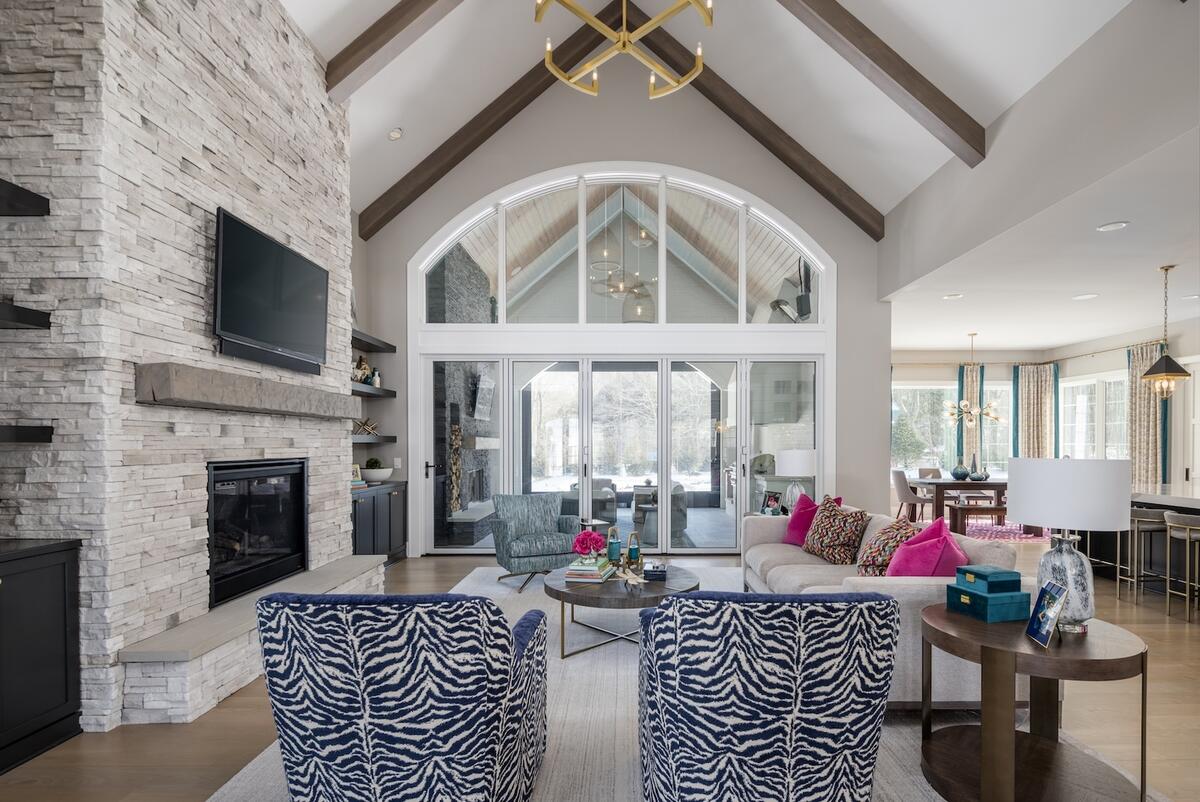
When you got to West Virginia, what did you do first?
I went to the internet. I became a member of the local Home Builders Association, because that’s really the only active design organization in the area. I spoke with the administrator a handful of times, and went to meetings with her. They put on a little home show, so I went there and introduced myself to some people, handed out a business card and told them I was new to the area. And then more recently, just trying to get my name out there, I started doing some print advertising. I think it’s working—the first magazine ad that went out in print, I got a couple of people who reached out to me. They weren’t quite ready to move forward yet, but they saw that ad and made that mental note. Hopefully, they’ll reach out later and move forward.
Where did the first client come from?
I have clients down in Florida, actually, which was a referral through the horse industry—it all comes full circle! And I still do work up in Ohio. Some of those clients are referrals, as well as people finding me on social media.
What were some of the initial systems or processes you established?
I continued using Chief Architect, which allows you to import the actual materials that clients are using and gives them a more realistic vision of the space. I also use Studio Designer—I knew I needed something that was going to keep track of everything, and I liked that I could import images of the actual product and the materials. People see, “OK, I’m paying this much for this piece,” which is helpful.
It’s a visual reminder: Don’t freak out—you like this.
Yes, there’s no confusion—this is what you approved and paid for. There was still a huge learning curve with that, and I ended up hiring someone on a contract basis to help me just manage all of that, because it’s a robust program.
So, is that an ongoing relationship? Or was that more just to get you set up?
At first, I thought it was just to help me get set up—she could teach me the ropes, and I could do it from there—but it has become an ongoing relationship. She is extremely knowledgeable and offers great insight. She works with designers all over the country. It’s interesting to get her take and hear how some of the larger firms do things.
Were there any tips that you were able to adopt?
I’m just wrapping my head around it now, but I have gone away from hourly billing and do more of a flat rate design fee. She has always [supported that] but tells me to still keep track of my hours. She’s like, “I know it’s a pain, but keep track of them so you can have something to go back to and say, ‘OK, well, I thought it was gonna be this many hours; this is how much I billed for, and in reality, it was this,’ Then you’ll have those kinds of metrics for the next time you get a similar project, and you can say, ‘OK, this is a similar project, I spent whatever, I charged this much, but I lost, in a way. So, I’m going to charge more on the next one.’” Starting in the beginning of next year, I’m going to be keeping track of my hours more so I can get those metrics, and then, hopefully by the middle of 2024 or by 2025, I’ll be able to use those for future projects.
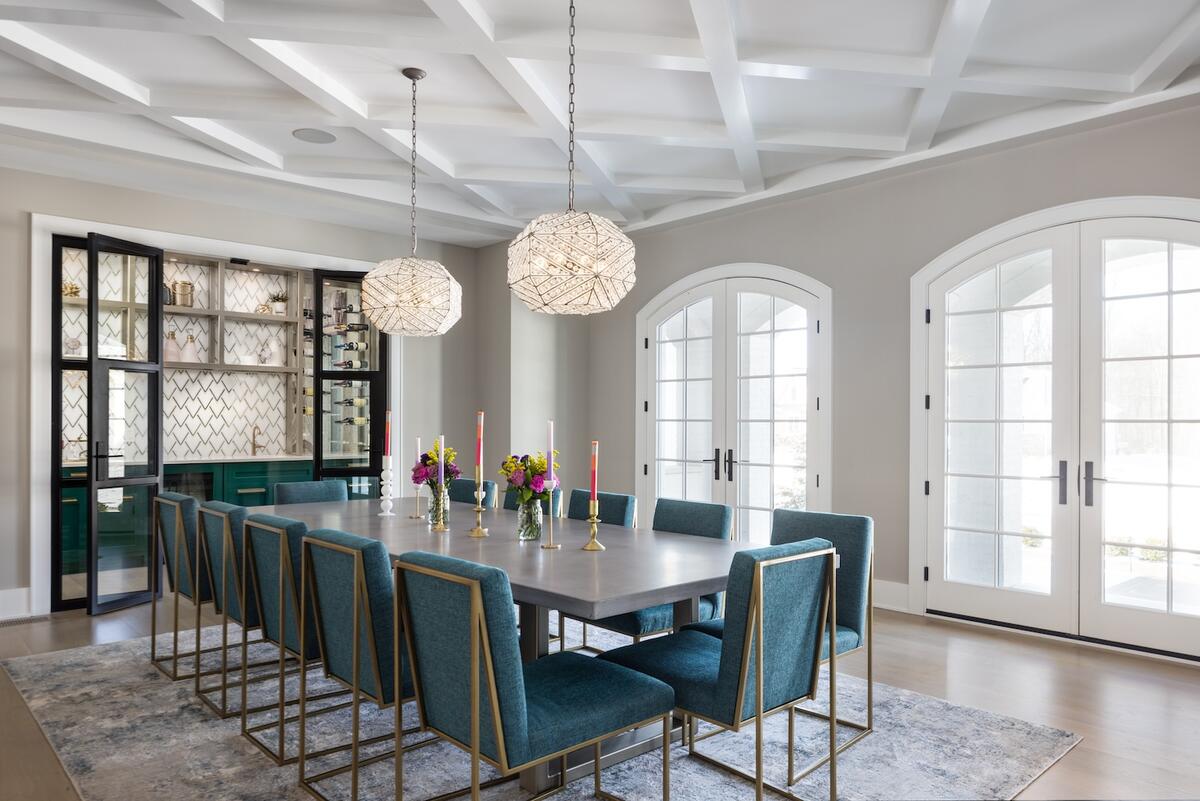
Why has the flat fee worked better for you and your clients?
A little bit of it was the hour tracking. If I don’t have to track my hours for billing, then I’m not thinking as much about the hours when I’m working on these projects, so I’m almost giving the client a little bit more, in a way. I also don’t necessarily want to work with someone who’s going to nickel-and-dime me on every little thing. So that part is nice too, I guess, when you’re working within a lump sum, and there are no hours for the client to track. You’re not subjecting yourself to: “Oh, well, you did this for half an hour, and I shouldn’t be paying for that.”
Can you tell me about how you talk about money with clients?
When they ask how I structure my fee, I just tell them I don’t do hourly anymore—that I found that working in a fee-based structure is better, and I’m able to offer more to my clients in doing so. And thus far, I haven’t gotten any pushback with it. I ask for a larger deposit, and then I do additional billing in phases until the end of the project. I know some people who ask for the full fee upfront, and I haven’t found that to be necessary for my business yet. I try to be as open as possible. If they have questions, I’m flexible—not with my time or my fees, but I’m open to conversations. That’s something I learned in my last position—the importance of being open and honest about charging—because there were definitely times when people were confused about where money was going or how fees are getting applied. Like, I don’t want a headache; it’s just better to be upfront about it.
Where did clients get confused?
I did a lot of cost-plus in the past, and it was extremely confusing for people, even though it’s pretty straightforward. It definitely became tense at times dealing with that, but these days I don’t run into any issues. If I’m hired by a client who’s working with a builder, I just say to them upfront, “This is my design fee, this is what I’m doing, and I don’t do anything with the purchasing of materials or anything.” I don’t need that overhead or the headache. I give the builder the selection sheets and tell them where to order everything from. If I need to order something specifically, I can. I have no problem doing that, but otherwise I just let them handle it themselves directly. I’m just making my money off the design fee. My fee may be a little higher to compensate for that, but that’s how that’s working right now.
There’s got to be immense freedom in not having to do all the ordering and tracking and the management of materials.
Definitely. I’ve gone back and forth asking myself, “Does this make sense? Am I losing a lot of money on not doing this?” But there is definitely peace of mind in not having to deal with it, and not having that additional stress of, “OK, they said this was gonna be here now, and now it’s delayed two weeks, and it’ll be here then.” And then the builder’s calling you like, “Where’s this material? We need it, blah, blah, blah.” It’s out of my hands, you know? Here are your selections. If I need to reselect something because it’s a backorder, let me know, and I’d be happy to do so. But I don’t need to run around to troubleshoot any of that. I’m not in the area where the products are being delivered, so it would be more difficult for me to oversee all of that and manage it. Right now, just working with a design fee and having the builder or contractor order all the materials through their business—that works for me.
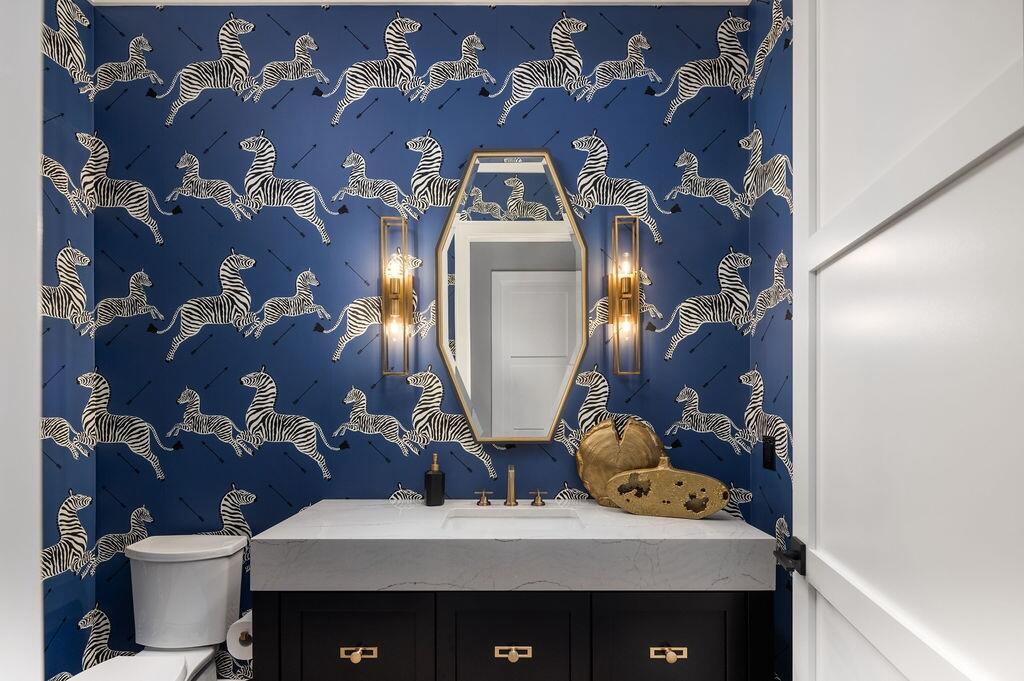
As you break into the West Virginia design community, what do you notice is unique about it?
The housing market is different here, for sure. There are not as many of those higher-end home areas that I’m used to working with. I’m outside of Morgantown, and WVU is in Morgantown, so the doctors and [hospital employees] are relatively close. I’m lucky in that sense. About 45 minutes to an hour away is Deep Creek Lake, Maryland, and a lot of people from here and the Washington, D.C., area have second homes in that area, which is a higher-end market. And there are definitely some West Virginia builders that are doing work up there.
For someone who wants to launch a firm in a new place the way you’ve done, what is the secret to laying the groundwork for creating a community?
I know it’s not always the most fun thing to do, especially if you don’t know anyone. I’ve always been lucky to attend events with people [I already know]. But now, moving here, I’m not lucky—I don’t really know a lot of people down here yet, so I’m attending them by myself. And it’s scary, but most people are extremely welcoming and want to get to know you. I think you just have to go and do it. And it takes time, and you can make a million excuses not to go, but it has been extremely helpful for me and my career growth and now my business growth. I just attended some events two weeks ago, and I’ve already gotten a referral from one of the contractors I met there. Had I not gone, I wouldn’t have gotten a potential opportunity.
Where do you shop?
When I’m up in Cleveland, I utilize showrooms a lot. And when I am working from home, I do a lot on the internet. I order samples and have them sent here. I regularly attend High Point Market—at least once a year, maybe twice—to visit those furniture showrooms, talk to my reps and learn what’s new.
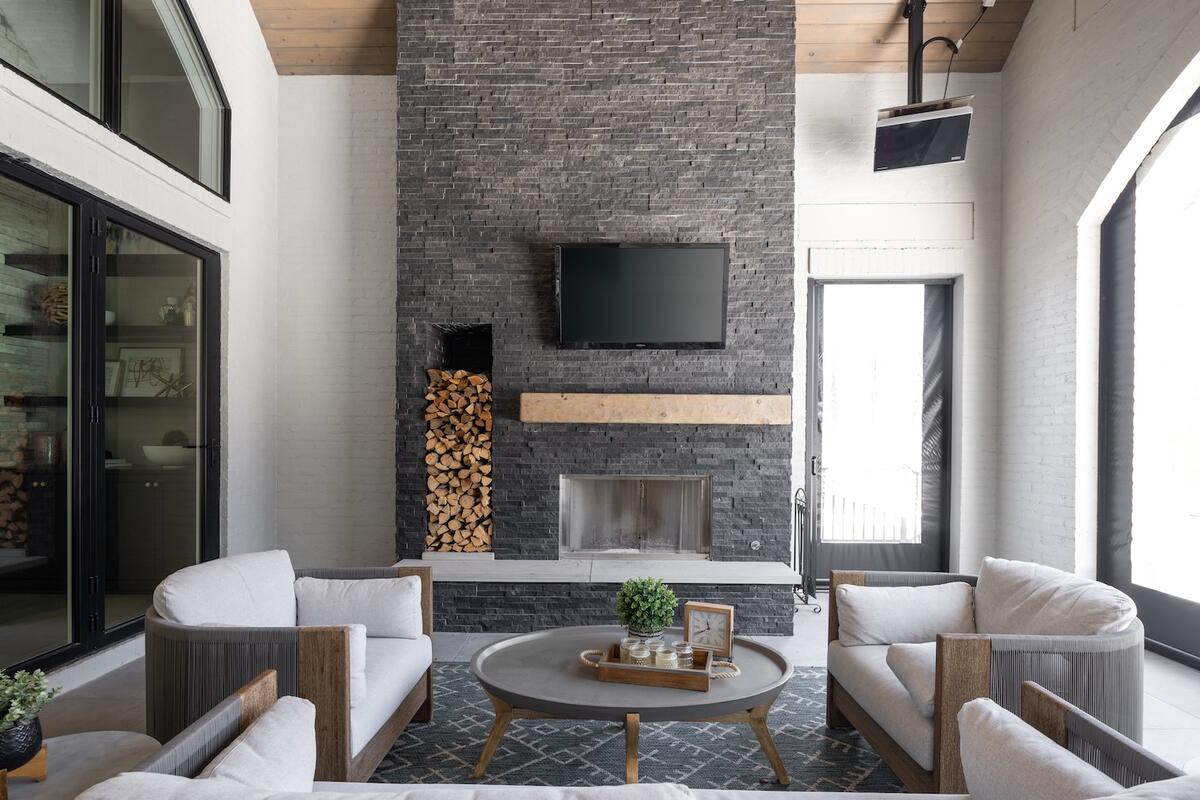
What does success look like for you?
Continuing my personal growth and business growth. At this point, I have put everything into my business, so I’m really focusing on that and wanting it to grow, and I have a lot of goals for the future. I’m excited to start tackling those one by one.
What are you hoping to build or accomplish?
I’m hoping to work with my marketing person and put together materials for next year in order to step up marketing for my business and focus on social media. I’m going directly after builders. I love new construction, so we’re really focused on building more relationships with builders in the area, in Ohio and in different states and all over.
Are you working with a contractor on marketing?
I just recently started working with a marketing contractor who’s doing a few projects for me. She and my finance person are the two contractors I work with right now. I’m thinking that might be a need for 2024—hiring a contracted designer who can help me do some drawings. Another goal for the business is to do an online store, which would help with that passive income that everyone’s talking about.
I can’t wait to see how it unfolds.
I’m excited. I think another important thing is realizing what your strengths are. I’m not a marketing person. I have all these ideas in my head, but I don’t know how to organize them or put them to paper—I need someone to help me with that. I’d love to be able to do everything, but you really have to trust people. You can’t do it all. So, I’m really learning that lesson of trust and letting go and not being so much in control of everything.
To learn more about Kaleigh Cody and River Birch Design, visit her website or find her on Instagram.











